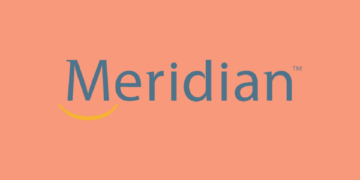How to Compare Interest Rates Between Different Types of Loans

Understanding Loan Interest Rates
When it comes to borrowing money, one of the most crucial aspects to consider is the interest rate. This rate serves as the cost of borrowing and can significantly impact your total repayment amount. With a deeper understanding of interest rates, you can make financial decisions that not only save you money but also align well with your financial goals.
It’s essential to grasp the various types of loans available and how they influence interest rates. Common loan types include mortgages for purchasing homes, personal loans for various needs, car loans for financing vehicles, and student loans designed to support education expenses. Each of these loans typically comes with its own interest rate structure and terms that borrowers need to be aware of.
Loan Types and Their Importance
For instance, mortgage rates in Canada are often lower than those of personal loans due to the secured nature of mortgages. Conversely, personal loans, being unsecured, usually carry higher rates to compensate lenders for the added risk. By choosing the right loan type, you can greatly influence your financial outcome.
Rate Structures
Another critical point is the rate structure. Interest rates can be categorized as fixed or variable. A fixed-rate loan maintains the same interest fare over the life of the loan, providing steady payments that make budgeting easier. For example, a fixed mortgage rate in Canada currently hovers around 2.5% for a 5-year term, allowing borrowers to plan effectively without fearing sudden rate increases. In contrast, a variable rate loan can fluctuate with market conditions, which means your payments may vary each month; while you might benefit from lower payments in a favorable rate climate, it also poses the risk of higher costs if rates rise.
Terms and Conditions
Lastly, another vital element when comparing loans is reviewing the terms and conditions. Each lender may impose different fees or fine print that affects the overall loan cost. For instance, some may charge origination fees, prepayment penalties, or late payment fees. Understanding these details can unveil the full financial picture, helping you avoid costly surprises down the line.
In Canada, viable interest rates can lead to significant savings over the loan term; it’s not merely about securing the lowest rate. Instead, it’s about matching the loan features to your unique financial situation and goals. By taking the time to compare rates effectively, assessing the specifics of different loan options, and thoroughly understanding the terms of agreements, you can make well-informed choices that align with your financial future.
This article will continue to guide you through the necessary steps for evaluating interest rates effectively, ensuring informed decision-making when it comes to your financial commitments.
Strategies for Comparing Interest Rates
Now that you have a clearer understanding of interest rates and the different loan types, the next step is to identify effective strategies for comparing these rates across various loans. This process allows you to evaluate which loans align best with your financial needs and objectives.
Identify Your Borrowing Needs
Before diving into comparisons, it’s crucial to define your borrowing requirements. Start by asking yourself these questions:
- What is the purpose of the loan? Understanding whether you need a personal loan, mortgage, car loan, or student loan influences the rate you will be offered.
- How much money do you need? The loan amount can affect the interest rate; for instance, larger loans may sometimes come with slightly lower rates.
- What is your repayment timeline? The repayment period you choose can also impact the interest rate. Shorter terms typically have lower rates but higher monthly payments.
Gathering this information sets a clear foundation for your comparison, helping you determine which types of loans best suit your circumstances—whether you are making a significant investment or addressing short-term financial needs.
Research Lenders
Once you have outlined your needs, the next step is to research various lenders. In Canada, you’ll find a mix of traditional banks, credit unions, and online lenders. Each can offer various rates and terms, which requires diligent exploration. Consider the following factors:
- Reputation: Look for lenders with strong customer reviews and ratings to ensure reliability and customer service.
- Loan Options: Compare the loan products offered by different lenders; some may specialize in certain types of loans or borrower profiles.
- Prequalification Processes: Some lenders allow you to prequalify for loans without impacting your credit score, giving you a clearer picture of the interest rates available to you.
Engaging with multiple lenders not only broadens your options but also enables you to negotiate better terms. Many borrowers aren’t aware that lenders are sometimes open to adjusting their rates based on competitive offers.
Utilize Online Comparison Tools
In today’s digital age, utilizing online comparison tools can significantly enhance your efficiency in rate assessments. These tools allow you to enter your financial information and receive tailored loan offers from multiple lenders almost instantaneously. When using these tools, consider:
- Input Accuracy: Ensure the information you provide is accurate and reflects your actual financial situation for the most relevant results.
- Read Fine Print: Always review the terms associated with any offers. Sometimes the lowest rate might come with unfavorable terms or hidden fees.
- Stay Updated: Interest rates can fluctuate based on economic conditions. Regularly revisiting your comparisons can ensure you have the best current offers.
By employing these strategies for comparing interest rates across different loan types, you can make informed decisions that align with your financial capabilities and aspirations. Proceeding through each of these steps systematically will guide you to the loan that best meets your needs.
Understanding Loan Terms and Conditions
In addition to comparing interest rates, it’s essential to understand the loan terms and conditions associated with each prospective loan. The terms can significantly influence the overall cost and value of the loan, so carefully analyzing these elements is crucial.
Types of Interest Rates
Loans can have either fixed or variable interest rates, and knowing the difference can help you make the most informed decision:
- Fixed Interest Rates: With a fixed interest rate, your rate remains the same for the entire loan term. This stability provides predictability in budgeting, as your monthly payments will not change. For instance, if you take out a mortgage with a fixed rate of 3.5% for 25 years, your interest rate will remain constant.
- Variable Interest Rates: On the other hand, a variable interest rate may fluctuate based on the market conditions and the lender’s pricing. This could mean lower initial payments, but they could rise significantly over time. For example, if you secured a car loan at a variable rate of 2.5%, it may change to 3.5% in a year, increasing your monthly payment.
Understanding which type best suits your financial situation and risk appetite is vital. If you prioritize stability, a fixed-rate loan may be the better choice. However, if you are comfortable with some level of risk and market fluctuation, a variable-rate loan might offer savings in the short term.
Loan Fees and Additional Costs
When assessing interest rates, don’t overlook the fees and additional costs associated with a loan. Lenders may charge origination fees, application fees, or prepayment penalties that can add to the overall expense:
- Origination Fees: This fee may be a percentage of the loan amount and can vary widely between lenders. Be sure to factor this into your overall loan cost for a clearer picture.
- Application Fees: Some lenders charge fees merely to process your loan application. These should be included when comparing total costs.
- Prepayment Penalties: If you plan to pay off your loan early, check whether the lender imposes penalties, which can negate savings achieved through lower interest rates.
Each of these charges affects your loan’s affordability. By calculating the total cost of the loan, including interest, fees, and any other expenses, you can more accurately identify which loan offers the best overall value.
Consider Your Credit Profile
Your credit score plays a crucial role in determining the interest rates you qualify for, making it an essential factor in your comparisons. Lenders often reward borrowers with higher credit scores with lower rates because they are viewed as lower risk:
- Know Your Score: Before starting your loan search, check your credit score. Knowing where you stand can help you target lenders that match your credit profile.
- Work on Improvements: If your credit score is less than stellar, consider taking steps to improve it—pay down debt and ensure timely payment on existing loans—to secure better rates in the future.
- Shop for Rates: Utilize the “rate shopping” window after checking your score. Multiple inquiries in a short period generally won’t impact your credit negatively, allowing you to find the best loan without significant repercussions.
In conclusion, understanding loan terms, fees, and your credit profile are crucial steps in the interest rate comparison process. By delving deeper into these aspects, you can make a more informed choice that aligns with your financial goals and circumstances. This comprehensive approach to comparing interest rates will empower you to choose the loan that best supports your financial journey.
Final Thoughts on Comparing Interest Rates
In summary, effectively comparing interest rates between different types of loans requires a multifaceted approach. It’s not just about identifying the lowest interest rate; it’s essential to take into account the loan terms and conditions, including whether the interest rate is fixed or variable. Each option has its own implications for your overall financial strategy.
Additionally, evaluating loan fees and any hidden costs can dramatically influence the true cost of borrowing. For instance, origination or application fees can significantly impact your total repayment amount, which is an aspect often overlooked by borrowers. Always calculate the total cost of loans rather than focusing solely on the advertised rates.
Your credit score is another vital factor in this comparison process. A solid credit profile can open doors to more favorable rates and terms, ultimately making loans more affordable. Regularly assessing your credit score and taking steps to improve it can empower you to secure better loan terms in the future.
By staying informed and diligent in your loan comparisons, you’ll equip yourself to make decisions that align with your financial objectives. Utilize various tools and resources available in Canada to simplify the comparison process. Ultimately, the goal is to find a loan that suits your individual needs while minimizing costs and maximizing benefits.

Linda Carter is a writer and financial consultant specializing in economics, personal finance, and investment strategies. With years of experience helping individuals and businesses make complex financial decisions, Linda provides practical analyses and guidance on the World Information Now platform. Her goal is to empower readers with the knowledge needed to achieve financial success.






